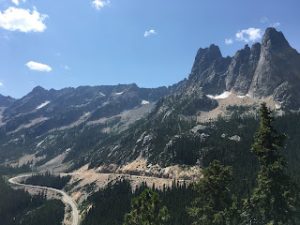One of the awesome research experiences I had as an undergrad involved working with Dr. Jennifer Ruesink and Dr. Alan Trimble at their field station on Willapa Bay, located in southwest Washington. Willapa Bay, the second largest estuary on the west coast, is separated from the Pacific Ocean by a 28-mile long peninsula aptly named Long Beach Peninsula (and dubbed the “World’s Longest Beach”). Willapa Bay boasts an oyster and clam fishery, elusive seven-gill sharks (not be confused with friendly Puget Sound locals, the six-gill shark), sturgeon, and a myriad of migrating birds yearlong. With the Pacific Ocean on one side, the Willapa Hills on the other, bald eagles flying overhead and great blue herons poised to catch fish as the tide goes out; it is truly a beautiful place.We were interested in finding out what the distribution and recruitment of the nonnative Manila clam, Ruditapes philippinarum, looked like in Willapa Bay, both spatially and over time. Manila clams, which are now commercially harvested in Willapa Bay, likely hitchhiked their way into the bay on Pacific oysters that were introduced from Japan in the 1940’s.Since Manila clams have a larval stage, it can be difficult to untangle what affects where they settle. Are they attracted to areas where there are lots of adult clams? Do they prefer areas that have more freshwater input from rivers, or places closer to the mouth of the bay? Or are they just going with the flow and letting the tide and currents determine their settling grounds?To get at these questions, we made and put out lots of “clam bags” (mesh bags with gravel) on PVC poles onto tide flats all along the bay to measure recruitment, took sediment cores to determine recruit density, and took lots of plankton tows via boat to measure larval abundance.What did we learn? Well read the paper to find out!
Here’s the paper!


